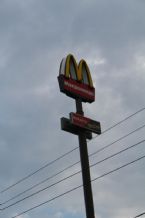- Red Rasberries & Walnuts for Cancer by Risingsun
19 y
10,332 2 Messages Shown
Blog: Walnut Remedy Research Blog
Ellagic Acid: One of the Most Important Health Discoveries of the Decade
To all Oncologists:
The Hollings Cancer institute at the University of South Carolina is doing a double blind study on a large group of 500 cervical cancer patients that has everyone excited. They are excited because their past nine years of study have shown that a natural product called ellagic acid is causing G-arrest within 48 hours (inhibiting and stopping mitosis-cancer cell division), and apoptosis (normal cell death) within 72 hours, for breast, pancreas, esophageal, skin, colon and prostate cancer cells.
Clinical tests also show that ellagic acid prevents the destruction of the p53 gene by cancer cells. Additional studies suggest that one of the mechanisms by which ellagic acid inhibits mutagenesis and carcinogenesis is by forming adducts with DNA, thus masking binding sites to be occupied by the mutagen or carcinogen.
Ellagic acid can be found in different foods, but the clinic has identified the red raspberry as having the highest content of the acid. Moreover, the doctors at Holling's have created a patent pending process of extracting potent levels of the acid from the seeds of the raspberries that are getting dramatic results.
Other USA sources substantiate the Hollings Cancer Institute include:
Department of Surgical Oncology, College of Medicine, University of Illinois at Chicago, Illinois; Division of Environmental Health Sciences, The Ohio State University The Ohio State University School of Public Health, Columbus, Ohio; Department of Medicine, Lakeside Veterans Affairs Medical Center, Northwestern University School of Medicine, Stanford, CA; Department of Preventative Medicine, Ohio State University, Columbus, Ohio.
Study by the Washington Raspberry Commission: You can see the Hollings research articles there.
Here are some notes from the site. Reprinted by permission from WRC
"The proposed study, under the direction of Daniel Nixon, M.D., President of the American Health Foundation and Drs. Dave Gangemi and Blair Holliday of the Hollings Cancer Center/Medical University of South Carolina, will evaluate women with atypical squamous cells of undetermined significance (ASCUS) in which there is neither treatment nor clinical evaluation available. ASCUS represents as much as 10% of all Papanicolaou smears in the US and represents approximately 5 million females. In this population, these women who are infected with human papilloma viruses (HPV) types 16 and/or 18 are at the greatest risk of developing cervical cancer at some stage in their lives. In addition, women who are diagnosed with the immature metaplastic form of ASCUS usually have lesions which are higher in the endocervical canal, are more metabolically active, have flatter surface areas, and are more likely to invade the underlying connective tissue as well as the endocervical glandular epithelium. This population represents approximately one million women in the United States alone. The condition is very pronounced in countries outside the United States. In India this is one of the two major cancers affecting women."
Research sources:
Cancer Lett 1999 Mar 1 1;136(2):215-21
Expression and its possible role in G1 arrest and apoptosisi in ellagic acid treated cancer cells.
Narayanan BA, Geoffroy O, Wilmington MC, Re GG, Nixon DW
Cancer Prevention program, Hollings Cancer Center, Medical University of South Carolina, Charleston 29425, USA.
"Ellagic acid is a phenolic compound present in fruits and nuts including raspberries, strawberries and walnuts. It is known to inhibit certain carcinogen-induced cancers and may have other chemopreventive properties. The effects of ellagic acid on cell cycle events and apoptosis were studied in cervical carcinoma (CaSki) cells. We found that ellagic acid at a concentration of 10(-5) M induced G arrest within 48 h, inhibited overall cell growth and induced apoptosis in CaSki cells after 72 h of treatment. Activation of the cdk inhibitory protein p21 by ellagic acid suggests a role for ellagic acin in cell cycle regulation of cancer cells."
Focus: To Evaluate Red Raspberry Ellagic Acid in Prevention of Cervical Cancer
There is now clinical evidence to suggest that ellagic acid concentrations at tissue sites such as the cervix may be obtained with the oral administration of red raspberries. This belief comes from bioavailability studies in which human volunteers have ingested raspberry puree. Because of this and observations in human volunteers ingesting daily quantities of raspberry puree for prevention of colon cancer, a clinical trial will examine ellagic acid from raspberries in prevention of pre-cancerous cervical lesions developing into a malignant condition.
The proposed study, under the direction of Daniel Nixon, M.D., President of the American Health Foundation and Drs. Dave Gangemi and Blair Holliday of the Hollings Cancer Center/Medical University of South Carolina, will evaluate women with atypical squamous cells of undetermined significance (ASCUS) in which there is neither treatment nor clinical evaluation available. ASCUS represents as much as 10% of all Papanicolaou smears in the US and represents approximately 5 million females. In this population, these women who are infected with human papillomaviruses (HPV) types 16 and/or 18 are at the greatest risk of developing cervical cancer at some stage in their lives. In addition, women who are diagnosed with the immature metaplastic form of ASCUS usually have lesions which are higher in the endocervical canal, are more metabolically active, have flatter surface areas, and are more likely to invade the underlying connective tissue as well as the endocervical glandular epithelium. This population represents approximately one million women in the United States alone. The condition is very pronounced in countries outside the United States. In India this is one of the two major cancers affecting women. One way to evaluate the potential progression rate in these individuals is to monitor the levels of viral oncogene (E6/E7) messenger RNA expression in cervical tissue. The study with evaluate women with ASCUS who have little or no viral oncogene expression with those who have relatively elevated levels of HPV oncogene expression.
The Study Approach & Red Raspberry Dosage
The approach will orally administer ellagic acid (using red raspberry puree, the primary whole foods source of ellagic acid) at dosages providing detectable tissue levels in the cervix (Phase I of proposed study) over a two-year period (Phase II). Women in the study (to commence 1999-2000) will be carefully evaluated for any potential adverse effects of treatment and their E6/E7 levels carefully monitored every three months. Women receiving treatment will then undergo a full clinical evaluation at the end of the two-year trial period and changes in the levels of oncogene expression and in cervical pathology determined. Changes in women receiving the red raspberry dosage will be compared to changes in women receiving a placebo.
A biostatistician will evaluate the group sizes needed to determine a statistically significant change in ASCUS progression following ellagic acid (red raspberry) ingestion. Preliminary estimates indicate that five hundred women will be needed for the generation of valid predictions. Volunteers will be recruited from the MUSC Cancer Center Access Network, Clinics and the State Department of Health and Environmental Control. Entry will be based on pathological and cytological conditions discussed herein. Individuals will be divided into low and high HPV oncogene expression groups and each group further divided into ellagic acid and placebo groups.
Phase I Study
In Phase I, serum levels of ellagic acid will be monitored over a two-month period. At the end of this time cervical biopsies taken to determine tissue levels. Highly sensitive analytical techniques utilizing gas chromatographic mass spectroscopy will be utilized to measure tissue concentrations. The results from Phase I will be used to determine compliance rates and the daily dosage needed to detect ellagic acid in the cervix.
Phase II Study
In Phase II, cervical swabs will be taken from volunteers will well-defined cytopathological changes and the cells evaluated for HPV oncogene expression using a highly sensitive biomarkers assay (reverse transcriptase-polymerase chain reaction (RT-PCR). Individuals will receive oral dosages (to be determined from Phase I) of raspberry puree and be reevaluated every three months to determine the condition of their lesions (progressive, persistent, or regressive) using immunocytochemical techniques. Phase II will be a double blind placebo controlled study in which the research pharmacy laboratory will keep the treatment code. At the end of the two year period, date from each treatment group will be evaluated by a biostatistician and compared to placebo groups for changes in the rate of progression to Low Grade Cervical Intrepithelial Lesions (CINI). Any volunteer progressing to CINI during this study will be removed and given conventional therapy (colposcopy and biopsy, laser ablation, or loop
excision of the transformation zone)
A barrage of clinical research at Hollings Cancer Center (Charleston, SC) confirms that red raspberries, the richest food source of a substance known as ellagic acid, inhibits the growth of cancer cells. Studies under the direction of Dr. Daniel Nixon indicate that daily consumption of 150grams (1 cup) of red raspberries slows the growth of abnormal colon cells in humans, prevents (in some instances destroys) the development of cells infected with human papilloma virus (HPV) the cause of cervical cancer, and most recently found to break down extracted human leukemia cells.
Dr. Nixon's anti-cancer prowess comes at a time when most Americans seek to treat medical problems through changes in diet, rather than take medication. Foods containing significant levels of biologically active components that impart health benefits beyond basic nutrition when consumed in typical or optimal serving sizes, are fast -becoming the hot button for consumers. Red raspberries as the key source of cancer preventive, cancer fighting, and in some instances cancer cell destroying ellagic acid may be the ultimate cancer-fighting food today.
Food Sources of Ellagic Acid micrograms/gm dry wt
Red Raspberries 1500
Strawberries 630
Walnuts 590
Pecans 330
Cranberries 120
Ellagic Acid is a naturally occurring phenolic constituent in certain fruits and nuts. Research in the past decade confirms that ellagic acid markedly inhibits the ability of other chemicals to cause mutations in bacteria. Ellagic acid from red raspberries has proven as an effective antimutagen and anticarcinogen as well as a inhibitor of cancer.
http://www.cancertutor.com/Cancer/EllagicAcid.html
http://www.alternativehealth.co.nz/cancer/vitamins/ellagic.htm
http://www.life-enthusiast.com/ellagic/ellagic_acid_articles.htm
http://curezone.com/diseases/cancer/read/Ellagic_Acid.asp
http://curezone.com/diseases/cancer/read/Ellagic_Acid.asp
|
|
|

Risingsun
|
|
- Health Benefits of Walnuts by Dr Hulda Clark
15 y
3,266
| Walnuts are one of the best plant sources of protein. They are rich in fiber, B vitamins, magnesium, and antioxidants such as Vitamin E. Nuts in general are also high in plant sterols and fat - but mostly monounsaturated and polyunsaturated fats (omega 3 fatty acids - the good fats) that have been shown to lower LDL cholesterol. Walnuts, in particular, have significantly higher amounts of omega 3 fatty acids as compared to other nuts.
Purest Dr Hula Clark Cleanse Kits Here
|
|
|

Dr Hulda Clark
|
|
|
|
 CureZone
CureZone All Blogs
All Blogs Walnut Remedy Research Blog
Walnut Remedy Research Blog